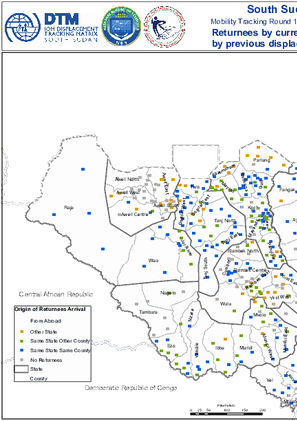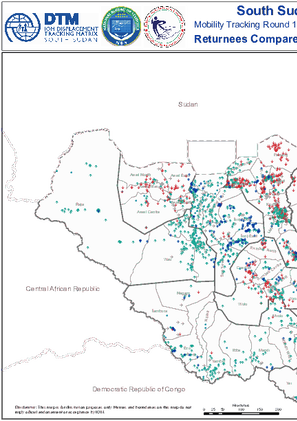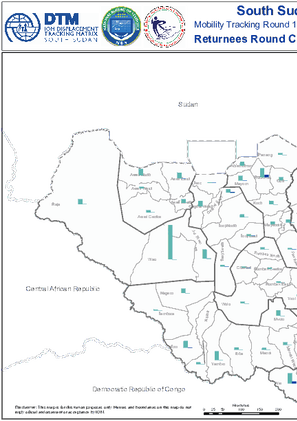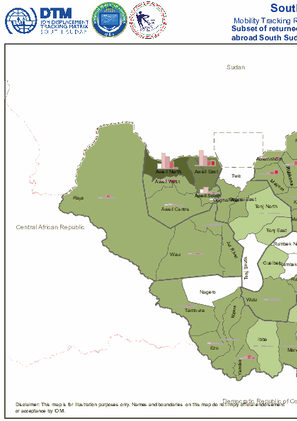-
Countries
-
Data and Analysis
-
Special Focus
-
Crisis Responses

Contact
dtmremapsupport@iom.int, isbdtmremapteam@iom.int
Language
English
Location
Pakistan
Period Covered
Jan 01 2019
Dec 31 2021
Activity
- Other
Remittances sent by millions of Pakistani migrants worldwide have supported the country’s economy by improving livelihoods and easing the pressure at times of economic crisis, such as energy crises, food insecurity and higher foreign debt repayments (Ahmed, 2021). Remittances are the second largest source of foreign exchange in the country, making Pakistani emigrants crucial actors in the balance of the payment deficit (Khan et al., 2021). The country is among the top recipients of remittances globally (World Bank, 2021). Recent studies showed that remittance inflows to Pakistan proved resilient during the COVID-19 pandemic, defying all predictions (IOM, 2021).

Contact
iomisbdtmremapteam@iom.int
Language
English
Location
Pakistan
Period Covered
Apr 23 2022
May 06 2022
Activity
- Flow Monitoring
IOM Pakistan collects data on the outflows of undocumented Afghan migrants at the Torkham and Chaman border crossing points in an effort to better understand the migration movements of undocumented Afghan migrants returning to Afghanistan from Pakistan. This exercise is part of the European Union funded project “Displacement Tracking Matrix Regional Evidence for Migration Analysis and Policy (DTM REMAP)”.
From 23 April to 06 May 2022, 805 undocumented Afghan migrants returned to Afghanistan, including 265 through the Torkham border point and 540 through the Chaman border point. During the reporting period, border authorities facilitated the return of 59 individuals due to the lack of legal documentation to remain in Pakistan. Therefore, information concerning these 59 individuals is not included in the report analysis.

Contact
vlutenco@iom.int
Language
Mongolian
Location
Mongolia
Period Covered
Feb 01 2022
Feb 28 2022
Activity
- Mobility Tracking
- Baseline Assessment
ОУШХБ-ын өмнөх судалгаануудаар газрын доройтол, уур амьсгалын өөрчлөлт зэрэг асуудлууд нь Монголын уламжлалт амьдралын хэв маягийг өөрчилж байгааг тогтоожээ. Ган зудын давтамж нэмэгдэж, ажлын байр хомс, амьдрах орчин нөхцөл шаардлага хангахгүй, хөдөөгийн хүн ам малаас хэт хараат болсон зэрэг нь хөдөөгийн хүн амын амьжиргааг залгуулах боломжийг өдрөөс өдөрт бууруулсаар байна. Үүний зэрэгцээ энэ байдал нь хот суурин газар болон бусад аймгийн төв рүү чиглэсэн шилжилт хөдөлгөөнийг нэмэгдүүлэх хүчин зүйл болсоор байна. Эдгээр шинээр гарч ирж буй шилжилт хөдөлгөөний (хүн амын хөдөлгөөн) хэв маяг нь тооллогын, бүртгэлийн мэдээлэл болон Монгол Улсын хэмжээнд амьдарч буй хүмүүсийн бодит тоон мэдээлэл хооронд ихээхэн зөрүү үүсгэсээр байна. Энэхүү туршилтын судалгаагаар ҮСХ болон ОУШХБ нь хамтран Өмнөговь, болон Дундговь аймгуудад багийн байршил дээрх хүн амын бодит тоог тандах зорилгоор Хүн амын хөдөлгөөнийг тандах матрицын “Хөдөлгөөний тандалт” – MT (Mobility Tracking) аргачлалыг ашиглахыг зорьсон юм.

Contact
vlutenco@iom.int
Language
English
Location
Mongolia
Period Covered
Feb 01 2022
Feb 28 2022
Activity
- Mobility Tracking
- Baseline Assessment
Previous IOM studies have found that a combination of complex effects including land degradation and climate change are altering traditional livelihood patterns in Mongolia. In a context of increased frequency of droughts and dzuds, the lack of job opportunities, inadequate living conditions, and the dependency of the rural population on livestock reduced the rural population's ability to earn a living. At the same time, this situation increased migration to urban areas and other aimags in unprecedented and unexplored ways. These emerging migration patterns created a large discrepancy between census data, registration data, and actual number of people living in the various baghs in Mongolia. With this study, IOM and NSO intend to use the Mobility Tracking (MT) methodology of the Displacement Tracking Matrix (DTM) toolbox to track the real number of people living in the various baghs in Dundgovi aimags.
This map shows the payams returnees are currently in. Where returnees' origin states and counties are different to those of their currently mapped location, this is indicated (Mobility Tracking Round 11, September 2021).
This map shows the direction of change in the number of returnees as mapped by round eleven of Mobility Tracking, at the location level (Mobility Tracking Round 11, September 2021).
This map compared the locations of returnees that were mapped during round eleven of Mobility Tracking, as compared to the locations that were mapped in the previous Mobility Tracking Round 10 (Mobility Tracking Round 11, September 2021).
This map compares the number of returnees as assessed in different rounds of Mobility Tracking, at the county level (Mobility Tracking Round 11, September 2021).
This map displays the subset of returnees who arrived at their counties from within South Sudan, by period of arrival (Mobility Tracking Round 11, September 2021).
This map displays the subset of returnees who arrived at their counties in South Sudan from abroad, by period of arrival (Mobility Tracking Round 11, September 2021).






